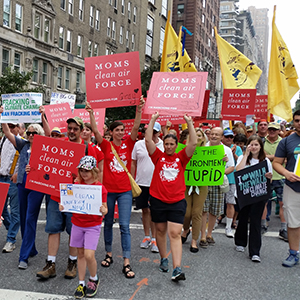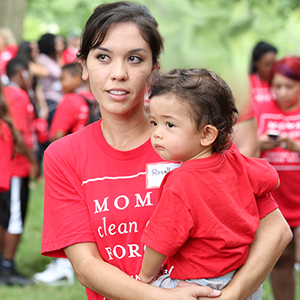By: Tracy Sabetta, Ohio Field Organizer, Moms Clean Air Force
Date: February 12, 2024
About: Environmental Protection Agency Docket ID No. EPA-HQ-OAR-2023-0434
To: Environmental Protection Agency
Good morning, and thank you for the opportunity to offer remarks today. My name is Tracy Sabetta, and I am the Field Organizer for Moms Clean Air Force in Pickerington, Ohio, just outside of Columbus. I am the mother of one daughter, and a lifelong resident of the Buckeye State. I am speaking today in support of the EPA’s proposed Methane Emissions Reduction Program and the need to cut methane and other harmful pollutants from oil and gas operations across the country. By ensuring oil and gas operators comply with federal methane standards and take action now to reduce emissions, this program is an important step towards addressing the climate crisis and protecting the health and safety of children and families across the country.
We know that reducing methane pollution is the fastest, most cost-effective way to immediately slow our current rate of climate change, and oil and gas companies are the largest industrial source of methane. The Methane Emissions Reduction Program’s waste emissions charge is a commonsense fee that will hold the nation’s largest oil and gas polluters accountable for excessive climate pollution.
The waste emissions charge, mandated by Congress in the Inflation Reduction Act, will help ensure oil and gas operators comply with federal methane standards by assessing a fee on the largest polluters if those companies fail to comply with federal standards. If companies abide by commonsense methane standards that cut waste and pollution, they won’t pay a fee.
Adopting rules to limit methane pollution would have a profound impact on states like Ohio that have failed to enact meaningful oil and gas methane protections of their own. Our state continues to be a major natural gas (7th) and oil (12th) producing state. According to the US Energy Information Administration, natural gas production in Ohio in 2022 was about 27 times greater than in 2012. So what does that look like? We are currently home to more than 60,000 active oil and gas wells. About three million Ohioans (roughly 26%) live within a mile of these wells, and many of those most heavily impacted live just downwind. In fact, the state legislature recently renewed its commitment to leasing public lands and state parks to oil and gas drilling.
Given these statistics, it is no surprise that we rank in the top five states with the highest health impacts from oil and gas pollution. A recent study led by Boston University’s School of Public Health and Environmental Defense Fund found that air pollution from the oil and gas sector has substantial adverse impacts on air quality, human health, and health care costs. The study revealed that in 2016, oil and gas air pollution in Ohio caused 349 early deaths and exacerbated asthma in 15,500 children in the state. The American Lung Association reports that there are currently 152,000 children living with asthma in Ohio, meaning that methane pollution negatively touched more than one in ten of our youngest residents.
When I started working with Moms Clean Air Force in 2011, my daughter was only 12 years old. I jumped at the chance to make a difference for her future and her health. Now, 13 years later, I often wonder if any of us have done enough. But each step forward gives me hope and the finalization of the EPA methane rule last year was a major accomplishment, but the work didn’t stop there. Moms Clean Air Force in Ohio supports the EPA’s proposed Methane Emissions Reduction Program to help enforce hard-won federal methane standards and protect the health and safety of my daughter, and children and families across the country. Thank you again for this opportunity.




